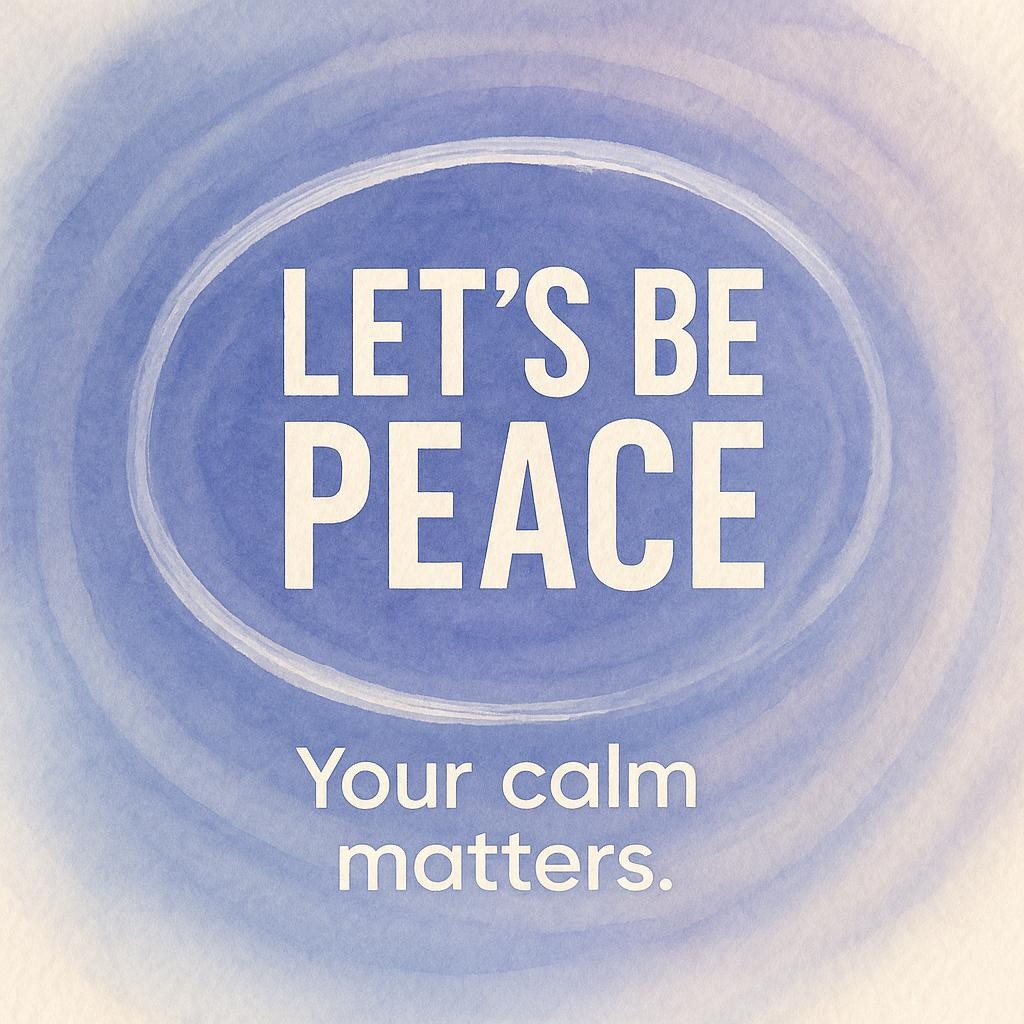From Hashtag to Heartbeat: How “Let’s Be Peace” Became a Movement (and Why Your Calm Matters)
Three words changed the room. Karen Lee Cohen had been signing posts with #BePeace, until her niece, Alissa, said it sounded too demanding. Karen listened, softened the language, and the phrase became a welcome instead of a command. “Let’s Be Peace” turned into the name, the mission, and, eventually, the movement at the center of Let’s Be Peace: 20 Unique Paths to Healing Yourself and Spreading Peace in the World .
What “Let’s Be Peace” Actually Means
This is not a slogan. Karen writes that a single inner shift can ripple outward, one person at a time, and that “when you find peace inside, you will then radiate peace, calm, and a sense of well‑being that becomes infectious” . She also describes why the invitation matters: peace inside strengthens mental and physical health and gives you concrete ways to be peace and spread peace. Her personal list of tools includes breathwork, gratitude, forgiveness, gut‑level intuition checks, and building the right support team, all designed to be personalized by you .
Karen is clear about the scope. As her friend Kellee Ratzlaff reflected, “it is much more than a book, it’s a movement,” which spurred Karen to gather experts so readers could learn directly from their methods and stories, then keep what resonates and discard what does not .
The Movement, Built Through Conversations
Most contributors chose Zoom interviews. That choice kept the tone human and practical, letting readers hear each healer’s language while making space for follow‑up questions that led to deeper, more useful guidance . The table of contents spans a wide field, from energy work and Reiki to EFT, hypnotherapy, Ayurveda, feng shui, and classical five‑element acupuncture, so you can browse and return to what you need in the moment .
Karen didn’t stop at the page. The movement a website, weekly blogs, and soon a companion podcast, so readers can keep practicing and stay connected as their needs change .
A Two‑Minute Calm Reset You Can Use Today
Karen’s “Tips” make calm actionable. She offers simple breath counts you can use anywhere, like breathe in to the count of 4, hold for 4, breathe out for 4, hold for 4 or 4, 7, 8. She pairs this with a gut check for decisions and a daily practice of gratitude, because even a few minutes can shift your state in meaningful ways .
Try this, based on the book’s tools:
- Breathe: Choose a count that feels comfortable, soften your shoulders, and notice your body settle .
- Gut check: Ask the real question. If your gut feels steady, proceed; if not, wait and ask again, or move on if it clearly says no .
- Gratitude: Name one thing you are grateful for. Karen practices gratitudes morning and night, and one sincere acknowledgment can steady your day .
When Calm Spreads
Contributors describe how inner steadiness becomes a catalyst. Fabienne Louis explains that peace is not abstract, but “a tangible and attainable reality,” and that nurturing it in ourselves naturally touches our bodies, relationships, careers, and communities . Brenda Michaels goes further: “Peace demands forgiveness,” because holding on hurts us, not the person we blame. She invites readers to forgive daily until they feel neutral, so life can soften and move again .
Personalize Your Path, Keep Your Agency
Karen’s guidance is permission‑based. She urges you to “embrace what resonates with you and discard what does not,” and to assemble supportive teammates while staying in the decision seat, listening to your body, your intuition, and your guides. The goal is not dependence, but empowerment, because our bodies are remarkable and give us signals to help us heal .
How do you choose practitioners? Emmanuel Dagher suggests a simple rule: if a practitioner makes you feel less than or talks down to you, “run in the other direction.” The right ones lift you up and help you remember who you are, so you can actually heal yourself . Sue Storm, “The Angel Lady,” underlines the core idea in plain words: “Listening to your inner guidance” and testing advice within yourself is what “You are your own best doctor” really means in practice .
Karen adds one more steady drumbeat: schedule regular check‑ins with yourself, monthly or quarterly, and adjust your practices as life changes. One size does not fit all. Trust your gut. If something stops feeling good, revise or release it. Keep the tools that serve you now, and let the rest go .
Beyond the Page, Into Daily Life
The book lives like a friendly toolkit you can keep returning to. Karen even shares a small ritual from a friend who counts “one Let’s Be Peace, two Let’s Be Peace” during morning yoga, a gentle way to weave intention into the body . And she closes her notes with a line that feels like a hand on your shoulder: “Love and trust yourself” .
Let’s Be Peace: 20 Unique Paths to Healing Yourself and Spreading Peace in the World is a collaborative circle led by Karen Lee Cohen, built on simple practices that steady you and a community that reminds you to keep going. Start with a few breaths, a gut check, one honest gratitude, and see how your calm shifts a conversation, a choice, a room. When your inner weather changes, what might soften around you next?
